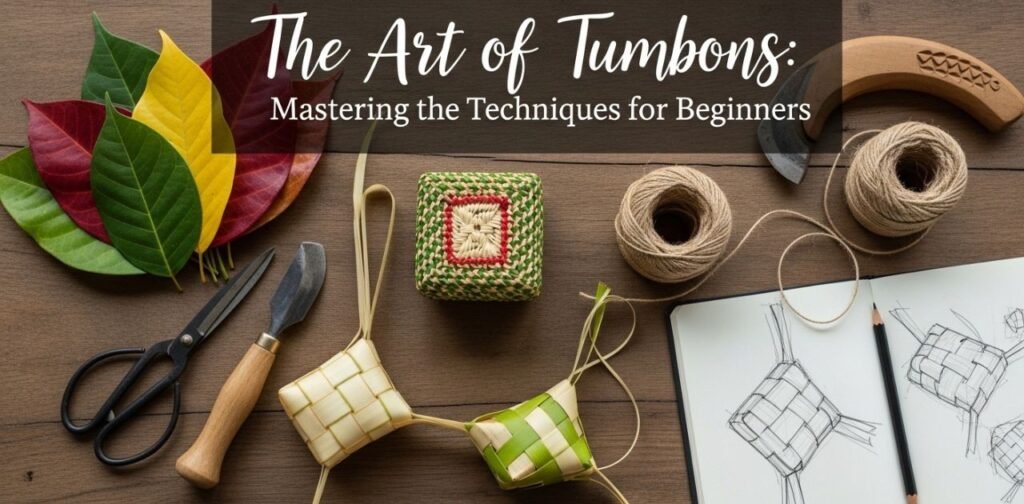Have you ever felt the thrill of creating something entirely your own? Tumbons, a unique form of art and expression, offer just that. These intricate pieces combine creativity with craftsmanship, allowing anyone to tap into their artistic side. Whether you’re a seasoned artist or a curious beginner, mastering the techniques of tumbon-making can be an exciting journey.
Imagine crafting beautiful shapes and designs from simple materials while engaging in a meditative process that hones your focus and patience. If this sounds intriguing, then you’re in for a treat! This blog will guide you through every aspect of tumbons—from understanding what they are to perfecting your skills. Let’s dive into this captivating world together and discover how you can become proficient in the art of tumbons.
What are Tumbons?
Tumbons are more than just crafts; they are expressions of creativity and skill. These decorative pieces typically involve intricate designs made from various materials, often showcasing cultural significance or personal meaning.
Originating in different parts of the world, tumbons can vary dramatically based on regional styles and techniques. Some feature elegant curves, while others incorporate geometric patterns that draw the eye.
The beauty of tumbons lies in their versatility. They can be used as functional items or purely for decoration, serving to enrich spaces with unique flair. Artists often blend colors and textures to create stunning visual effects that captivate viewers.
As you explore this art form, you’ll discover a vast array of possibilities waiting to unfold at your fingertips. Each tumbon tells its own story—an ongoing dialogue between the artist’s vision and the material itself.
History and Origin of Tumbons
The history of tumbons is rich and varied, tracing back to ancient cultures where craftsmanship held significant value. These traditional instruments evolved through generations, often reflecting the artistry of their makers.
Originally, tumbons were created for practical uses in daily life—whether for storage or transportation. Over time, they transitioned into objects of art and cultural expression. Each design tells a story about its origin.
Various regions contributed unique styles to tumbon-making. From intricate carvings found in Southeast Asia to simple yet elegant forms from indigenous communities in South America, each piece embodies local traditions and beliefs.
As globalization took hold, these techniques began blending with modern influences. This fusion has allowed new artists to explore innovative designs while paying homage to the age-old practices that laid the foundation for this craft.
Different Techniques for Making Tumbons
Tumbon-making is an art that embraces various techniques, each offering a distinct flavor to the final product. One popular method involves hand-rolling, where artisans use their fingers to mold and shape the dough into perfect forms. This technique allows for personal expression and creativity.
Another approach is cutting shapes with molds or stencils. This ensures uniformity in size while adding a visual appeal. Using diverse patterns can transform simple tumbons into stunning pieces of art.
For those looking for speed, machine pressing offers efficiency without sacrificing quality. Automated presses can create multiple tumbons at once, ideal for larger batches.
Decorating adds another layer of artistry. Techniques like glazing or painting elevate the aesthetic value significantly, making each piece unique and eye-catching. The choice of methods ultimately depends on your style and desired outcome in your tumbon creations.
Materials and Tools Needed for Tumbon-Making
To create your own tumbons, you’ll need a few essential materials. Start with high-quality wood, ideally something lightweight yet durable like balsa or pine. These types of wood are easier to manipulate and shape.
Next, gather some strong adhesive suitable for woodworking. This will help bond the pieces together securely. Don’t forget sandpaper; it’s crucial for smoothing out any rough edges on your tumbon.
For tools, a sharp craft knife or small saw is vital for cutting the wood accurately. A ruler and pencil will aid in measuring and marking precise dimensions before you make any cuts.
Consider having clamps on hand to hold everything in place while the glue dries. With these materials and tools ready at your workspace, you’re set to dive into the exciting world of tumbon-making!
Step-by-Step Guide to Creating Your First Tumbon
Creating your first tumbon can be an exciting journey. Start by gathering your materials: a sturdy base, colorful fabric, and decorative elements like beads or feathers.
Next, sketch out your design on paper. Visualizing it helps bring clarity to the project.
Once you have a plan, cut the fabric to size. Ensure it’s large enough to wrap around your base comfortably.
Begin assembling by attaching one edge of the fabric to the base using glue or stitches. Gradually work your way around the circumference, being careful not to rush.
After securing all edges, move on to adding embellishments. This is where you can let creativity shine! Attach beads or other decorations in patterns that resonate with you.
Give everything a final inspection for any loose ends before displaying your beautiful creation proudly. Enjoy every moment of this crafting experience!
Tips and Tricks to Mastering Tumbon Techniques
Practice consistently. The more you work with tumbons, the better your skills will become. Set aside time each week to refine your techniques.
Don’t shy away from experimenting with different styles. Each artist has a unique touch, and finding yours can add depth to your creations.
Use online resources and tutorials for inspiration. Platforms like YouTube or craft blogs often provide valuable insights that can enhance your understanding of tumbon-making.
Keep a journal of your progress. Documenting what works and what doesn’t helps you learn faster and track improvements over time.
Seek feedback from fellow enthusiasts or join a community group focused on tumbon art. Sharing ideas fosters growth and opens up new perspectives that may inspire fresh techniques.
Stay patient with yourself as you learn this intricate craft. Mastery takes time but is incredibly rewarding once achieved.
Benefits of Learning the Art of Tumbons
Learning the art of Tumbons opens doors to creativity and self-expression. This ancient craft allows you to unwind while channeling your artistic side. Each creation tells a story, reflecting personal style.
Practicing Tumbon-making can enhance focus and patience. The intricate techniques require attention, promoting mindfulness in today’s fast-paced world. It becomes more than just a hobby; it transforms into a meditative practice.
Tumbons also foster community connection. Joining workshops or online forums introduces you to fellow enthusiasts who share ideas and tips, enriching your experience even further.
Additionally, mastering this skill can lead to unique handmade gifts for loved ones or even small business opportunities down the line. Sharing handcrafted pieces adds value that mass-produced items simply cannot match.
Engaging with Tumbons cultivates resilience as you learn from mistakes and push boundaries in your creations. Each challenge faced is an opportunity for growth within this rewarding art form.
Conclusion
The journey into the world of Tumbons offers a unique blend of creativity and tradition. As you explore this art form, you’ll uncover layers of history and technique that enrich your understanding. The skills you develop will not only boost your confidence but also lead to endless possibilities for self-expression.
Learning to create Tumbons goes beyond just making objects; it fosters patience, precision, and attention to detail. Each piece represents more than just a craft—it’s an extension of yourself. Whether you’re seeking a new hobby or looking to deepen your artistic repertoire, mastering Tumbon techniques can be both fulfilling and enjoyable.
So take the plunge! Gather your materials, embrace the process, and allow yourself to experiment with different styles. With each creation, you’ll grow as an artist while immersing yourself in a practice that connects generations past with those yet to come. Happy crafting!



